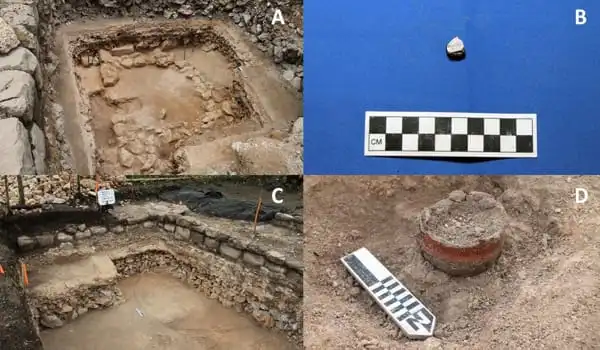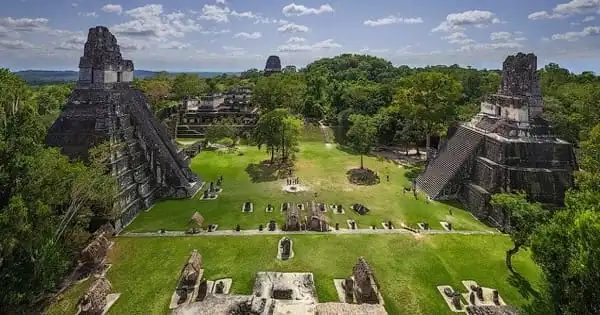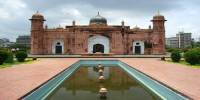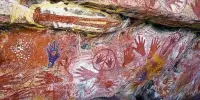Maya stelae are monuments created by the ancient Mesoamerican culture of the Maya. They are made up of tall, sculpted stone shafts and are sometimes connected with low circular stones known as altars, though their exact function is unknown. Although plain monuments may be found across the Maya region, several stelae were sculpted in low relief.
Early Maya communities had massive complexes centered on a shared kind of religion, but these complexes changed dramatically once royalty was established in 400 B.C. According to a recent study, monarchs throughout the Maya lowlands would remodel these complexes to consolidate their control, leaving their stamp on the landscape and reshaping how people remember it.
Early Maya communities had massive complexes centered on a shared kind of religion, but these complexes changed dramatically once royalty was established in 400 B.C. According to a Dartmouth study published in Ancient Mesoamerica, monarchs throughout the Maya lowlands would remodel these complexes to cement their dominance, leaving their mark on the landscape and reshaping how people remember it.
“Just as today’s political leaders frequently want to identify themselves, so did early Maya kings,” says Ryan H. Collins, a postdoctoral scholar in anthropology at Dartmouth’s Neukom Institute for Computational Science. “Maya rulers appeared to be concerned about the past world and worried that it may interfere with their control, so they tried to change it or perhaps obliterate it entirely. These kings considered themselves as the embodiment of the Maya sun deity and desired to leave their mark on the city, therefore monuments and the ways people experienced the city were altered to suit a ruler’s goals over his or her lifespan.”
In archaeology, it was assumed that Maya royalty represented a continuity with the past. However, since Maya rulers transformed peoples’ experiences of where they lived, these rulers were actually breaking away from Mesoamerican construction traditions and redefining the Maya city.
Ryan H. Collins
Collins looked at data from the Maya site of Yaxuná in central Yucatán, Mexico, as well as other pyramid plaza complexes or temples known as E groups in the Maya lowlands, such as San Bartolo, Tikal, Ceibal in Guatemala, and Cahal Pech in Belize, to see how they reflected observed astronomical alignments with the equinoxes and solstices.
Each monumental complex in the E group was built along an east-west axis and was distinguished by a pyramid to the west and a long-raised platform to the east. Previous study has discovered that the astronomical alignments of Maya constructions were most likely a reference to the sun deity and maize (corn) god, as well as the annual changes of the agricultural season.
Collins discovered that around 400 B.C., many Maya constructions in the E Group were either built on top of existing temples, demolished, or abandoned entirely, based on archaeological data from Yaxuná and other sites. In many situations, new architecture would be built directly on top of what came before, where there could be five, six, or even seven pyramids maintained under the most recent phase of construction.

“Over time, these temples became more about the rulers and less about the rituals and religion that drew the communities together in the first place,” Collins adds. Between 900 B.C. and 100 B.C., there were 11 phases of development at Yaxuná, just in the ancient city core.
While new monuments in the E Group were built on top of existing ones, some characteristics were preserved over time. The original eastern construction (Str. 5E-6) at Yaxuná, for example, had a circular stone foundation on level eight, which was retained and highlighted by following generations via a circle incised line on the floor of level six. Precious objects, such as a polished magnetite shard and a ceramic vase with greenware beads, were also discovered cached on levels seven and four.
“The Maya would go back and designate socially significant areas decades later, not centuries later, demonstrating how people were really emphasizing memory and continuity with things that they considered were essential,” Collins adds.
However, evidence of termination ceremonies was found in other regions of the Yaxuná site and other E Group sites. These rituals were used to eliminate the spirit or soul associated with a building, particularly if it was sacred, by spreading the ash of burned incense over an area, for example. Ash was discovered beside a grinding stone in Yaxuná’s eastern structure, indicating that a prior ritual place was used to prepare meals in later years.
“In archaeology, it was assumed that Maya royalty represented a continuity with the past,” Collins says. “However, since Maya rulers transformed peoples’ experiences of where they lived, these rulers were actually breaking away from Mesoamerican construction traditions and redefining the Maya city. The first millennium of Maya civilization for the E Group saw the construction of not only new monuments but also vast civic architecture, as large-scale routes were erected and districts began to emerge. These alterations may also have influenced the Maya civilization’s transformation from an egalitarian to a more hierarchical structure.”
















